trebuie să fii logat
-
întoarce-teX
-
Componente
-
-
Category
-
Semiconductoare
- Diode
- tiristoare
- Module izolate electric
- Redresoare în punte
-
Tranzistoare
- tranzistoare GeneSiC
- Module MOSFET Mitsubishi SiC
- Module MOSFET STARPOWER SiC
- Module MOSFET ABB SiC
- Module IGBT de la MITSUBISHI
- Module de tranzistori MITSUBISHI
- module MITSUBISHI MOSFET
- Module de tranzistori ABB
- Module IGBT de la POWEREX
- Module IGBT - de la INFINEON (EUPEC)
- Elemente semiconductoare din carbură de siliciu
- Accesați subcategoria
- Șoferii
- Blocuri de putere
- Accesați subcategoria
- Traductoare de curent și tensiune LEM
-
Componente pasive (condensatori, rezistențe, siguranțe, filtre)
- Rezistoare
-
Siguranțe
- Siguranțe miniaturale pentru sisteme electronice din seria ABC și AGC
- Siguranțe tubulare cu acțiune rapidă
- Inserții întârziate cu caracteristici GL/GG și AM
- Legături sigure ultra-rapide
- Siguranțe standard britanice și americane cu acțiune rapidă
- Siguranțe cu acțiune rapidă standard european
- Siguranțe de tracțiune
- Siguranțe de înaltă tensiune
- Accesați subcategoria
-
Condensatoare
- Condensatoare pentru motoare
- Condensatoare electrolitice
- Condensatori Icel Film
- Condensatoare de putere
- Condensatoare pentru circuite DC
- Condensatoare de compensare a puterii
- Condensatoare de înaltă tensiune
- Condensatoare pentru încălzire prin inducție
- Condensatoare de impulsuri
- Condensatoare DC LINK
- Condensatoare pentru circuite AC/DC
- Accesați subcategoria
- Filtre anti-interferențe
- Supercondensatoare
- Protecție la supratensiune
- Filtre de emisii revelatoare TEMPEST
-
Descărcător de supratensiune
- Descărcătoare de supratensiune pentru rețeaua de curent alternativ
- Descărcătoare de supratensiune pentru rețea de curent continuu
- Limitatoare de joasă tensiune ALVL
- Limitatoare de joasă tensiune PG
- Descărcătoare de trăsnet pentru rețele de curent alternativ până la 1000V
- Dispozitive de măsurare
- Accesați subcategoria
- Accesați subcategoria
-
Relee și Contactoare
- Teoria releelor și contactoarelor
- Relee cu stare solidă trifazată CA
- Relee cu stare solidă DC
- Regulatoare, sisteme de control și accesorii
- Porniri ușoare și contactoare inversoare
- Relee electromecanice
- Contactoare
- Comutatoare rotative
-
Relee cu stare solidă CA monofazate
- Relee cu stare solidă CA monofazate Seria 1 | D2425 | D2450
- Relee semifazate CA monofazate, seria CWA și CWD
- Relee semifazate CA monofazate seriile CMRA și CMRD
- Relee cu stare solidă CA monofazate Seria PS
- Relee cu stare solidă AC seria duble și cvadruple D24 D, TD24 Q, H12D48 D
- Relee monofazate din seria GN
- Relee cu stare solidă CA monofazate Seria CKR
- Relee monofazate pentru șină DIN AC SERIA ERDA și ERAA
- Relee AC monofazate pentru curent de 150A
- Relee duble cu stare solidă integrate cu radiator pe șină DIN
- Accesați subcategoria
- Relee cu stare solidă imprimabile monofazate CA
- Relee de interfață
- Accesați subcategoria
- Miezuri și alte componente inductive
- Radiatoare, Varistoare, Protectie termica
- Fani
- Aer conditionat, Accesorii tablou, Racitoare
-
Baterii, încărcătoare, surse de alimentare tampon și convertoare
- Baterii, încărcătoare - descriere teoretică
- Baterii litiu-ion. Baterii personalizate. Sistem de management al bateriei (BMS)
- baterii
- Incarcatoare de baterii si accesorii
- UPS și surse de alimentare tampon
- Convertoare si accesorii pentru fotovoltaice
- Stocarea energiei
- Pile de combustibil cu hidrogen
- Celule litiu-ion
- Accesați subcategoria
-
Automatizare
- Elevatoare Spiralift
- Piese pentru drone Futaba
- Întrerupătoare de limită, Micro întrerupătoare
- Senzori, traductoare
- Pirometre
- Contoare, relee de timp, contoare de panou
- Echipament industrial de protectie
- Semnale luminoase și sonore
- Cameră termică
- Afișaje LED
- Butoane și întrerupătoare
- Accesați subcategoria
-
Cabluri, fire Litz, Conduite, Conexiuni flexibile
- Firele
- Presetupe și manșoane
- Chipurile
-
Cabluri pentru aplicatii speciale
- Cabluri de prelungire și compensare
- Cabluri de termocuplu
- Cabluri de conectare pentru senzori PT
- Cabluri cu mai multe fire de temperatură. -60°C până la +1400°C
- Cabluri de medie tensiune SILICOUL
- Cabluri de aprindere
- Cabluri de incalzire
- Cabluri cu un singur conductor temp. -60°C până la +450°C
- Fire de cale ferată
- Cabluri de încălzire în ex
- Cabluri pentru industria de apărare
- Accesați subcategoria
- tricouri
-
Impletituri
- Impletituri plate
- Impletituri rotunde
- Impletituri foarte flexibile - plate
- Impletituri foarte flexibile - rotunde
- Impletituri cilindrice de cupru
- Impletituri si capace cilindrice din cupru
- Curele flexibile de împământare
- Impletituri de cupru izolate PVC - temperatura de pana la 85 de grade C
- Impletituri plate din aluminiu
- Kit de conectare - impletituri si tuburi
- Impletituri de otel
- Accesați subcategoria
- Echipament de tracțiune
- Capse de cablu
- Sine flexibile izolate
- Sine flexibile multistrat
- Sisteme de management al cablurilor
- Accesați subcategoria
- Vezi toate categoriile
-
Semiconductoare
-
-
- Furnizori
-
Aplicații
- Automatizare HVAC
- Automatizare industrială
- Băncile de energie
- Cercetare si masuratori de laborator
- Componente pentru zonele cu pericol de explozie (EX)
- Echipament industrial de protectie
- Echipamente pentru dulapuri de distributie si control
- Exploatare minieră, metalurgie și turnătorie
- Imprimare
- Încălzire prin inducție
- Inginerie energetică
- Mașini CNC
- Masini de sudura si sudori
- Mașini de uscare și prelucrare a lemnului
- Masini pentru termoformarea materialelor plastice
- Măsurarea și reglarea temperaturii
- Motoare si transformatoare
- Surse de alimentare (UPS) și sisteme redresoare
- Tracțiune cu tramvai și feroviar
- Unități DC și AC (invertoare)
-
Instalare
-
-
Inductori
-
-
Dispozitive de inducție
-
-
Serviciu
-
- Kontakt
- Zobacz wszystkie kategorie
How do temperature sensors work?

The basic parameter measured by electronic systems and monitoring and diagnostic systems is temperature - the main factor that affects the quality of operation and performance of industrial equipment. Temperature measurement is present in small and simple systems and devices as well as in advanced industrial systems.
Maintaining the right temperature of the device allows you to significantly extend its life while protecting it from failure or damage. When preparing a piece of equipment for operation, care must be taken to ensure proper ambient temperature and favourable conditions, as well as a good monitoring system using the best quality components and sensors.
The question remains to be answered: how do temperature sensors work? This largely depends on the type of sensor and its mechanism of operation. Manufacturers also use their own technologies to stand out from the competition present on the market. In this article we will focus on the most popular sensors and describe what they are based on.
Operation of the sensor depending on its type
Thermoresistive sensors
The operation of these sensors is based on the change in resistance as a function of temperature. As the temperature increases, the resistance of the sensor can either decrease or increase, usually nonlinearly. Each sensor has its own thermoelectric characteristics, which are adjusted according to the material used in the sensor. On this basis, we can determine the nature of resistance changes depending on the temperature.
Each thermoresistor has a nominal resistance, i.e. a resistance value at the reference temperature (usually 0 °C) and a specific sensitivity, calculated by the ratio of the resistance at 100 °C to the resistance at the nominal temperature.
Thermoelectric sensors (thermocouples)
The operation of thermocouples is based on the Seebeck phenomenon - the formation of a potential difference at the point of contact of two different metals, which is proportional to the difference in their temperatures. Each thermocouple has different properties that depend on the types of metals used in it. There are specific types of thermocouples, which are outlined in standards related to temperature sensors.
Each thermocouple has different temperature characteristics, therefore, for their proper operation, special control systems are used, which through built-in linearization components, allow for correct reading of the measured temperature. Additionally, systems based on thermocouples are small in size, do not need additional power supply and are reliable.
Semiconductor sensors (thermistors)
Solid-state sensors work in the same way as thermoresistive sensors. The only difference is the sign of the coefficient of resistance change that thermistors can have. There are NTC (negative sign) and PTC (positive sign) thermistors. NTC thermistors are mainly used for temperature compensation in devices and limiting values of inrush currents. PTC thermistors can be found, for example, in signaling systems as protection against overcurrent.
Integrated sensors
The principle of integrated sensors is that the temperature is measured by a measuring element and then processed by circuitry housed in a single integrated circuit enclosure. Semiconductor sensing elements are based on using the base-emitter junction voltage. As the temperature increases, the voltage decreases accordingly. Such sensors are most commonly found in electronic devices to protect their circuits from excessive heating, which can lead to irreversible damage.
Summary
Each temperature sensor is characterized by properties specific to its construction. Depending on those properties, they differ in their operating principle and the way they process input signals. In this way, for each application we will find the type of sensor that best fulfils its role, for example when working indoors or outdoors.
More information about temperature sensors can be found on our website: temerature sensors dacpol.eu.
Related products
Related posts
 Now available – DC/DC converters from PREMIUM
Now available – DC/DC converters from PREMIUM
 New release in DACPOL lighting for lathes – Kira covers
New release in DACPOL lighting for lathes – Kira covers

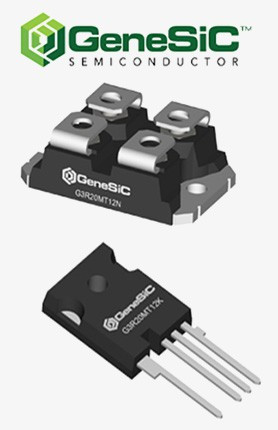
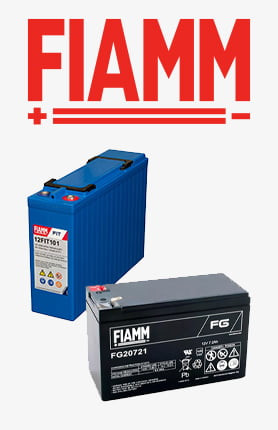
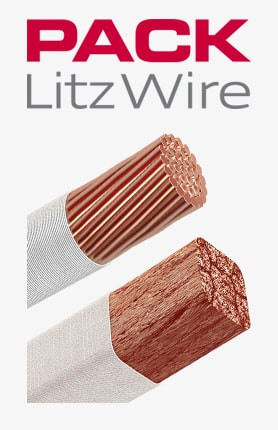
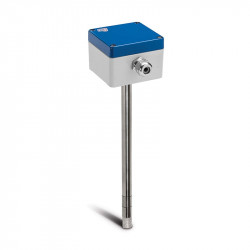

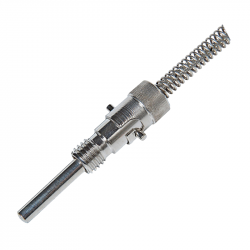
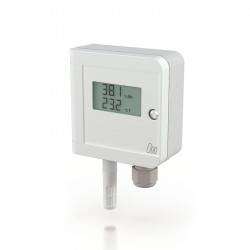
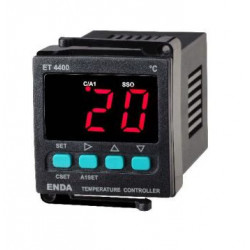
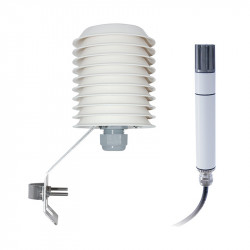
Leave a comment